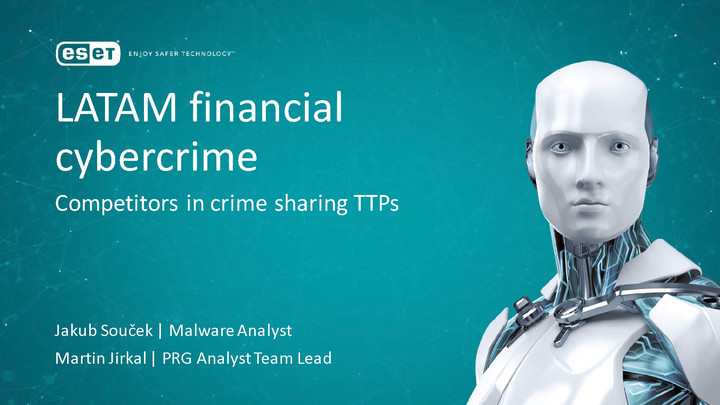LATAM financial cybercrime: competitors in crime sharing TTPs
Jakub Souček (ESET) & Martin Jirkal (ESET)
17:45 UTC on
Day 2
THURSDAY 01 OCTOBER
Jakub Souček
ESET
Jakub Souček graduated from Czech Technical University in Prague. He joined ESET in 2015. His current work there is focused on proactive botnet tracking and deep analysis of malware. He also participates in developing tools to help track botnets and extract useful information about their evolution. In his free time, he enjoys listening to music and is a big fan of many TV series.
Martin Jirkal
ESET
Martin Jirkal is analyst team lead and detection engineer in the virus laboratory of ESET in Prague. He is responsible for the detection of new threats, monitoring and detections and of crimeware threats, and education of new ESET talents. He is co-creator and occasional teacher of reverse engineering classes at Czech Technical University in Prague, where he graduated. In addition to IT security and reverse engineering, he also loves complex board and role-playing games.






 CTA TIPS
CTA TIPS 